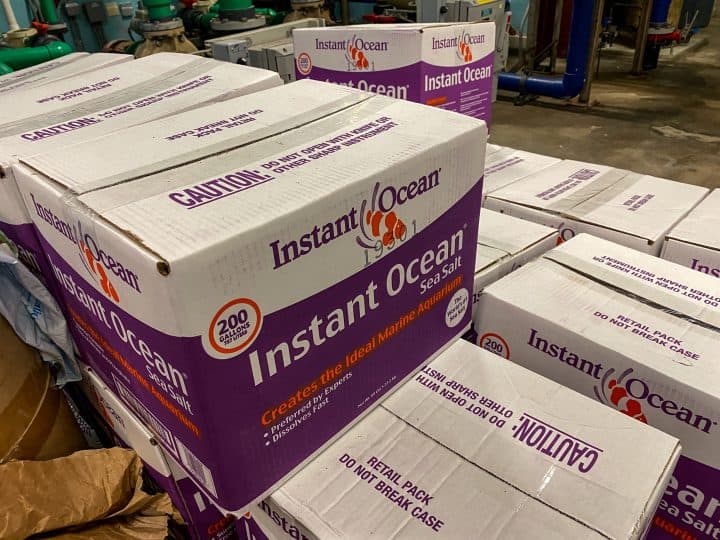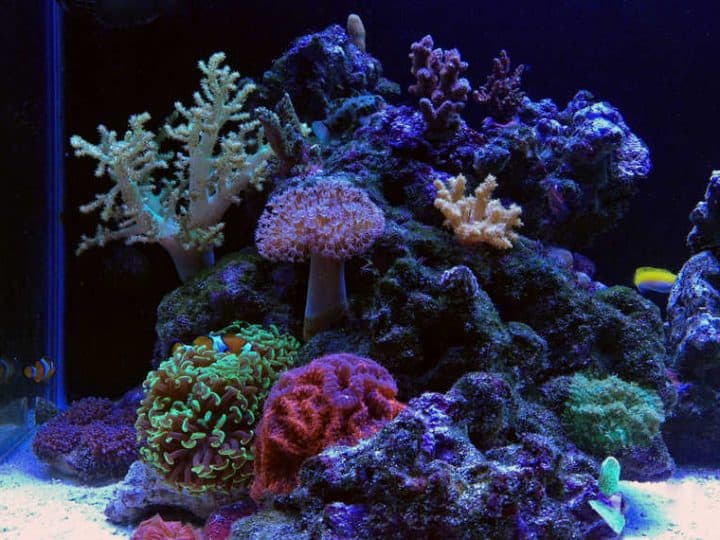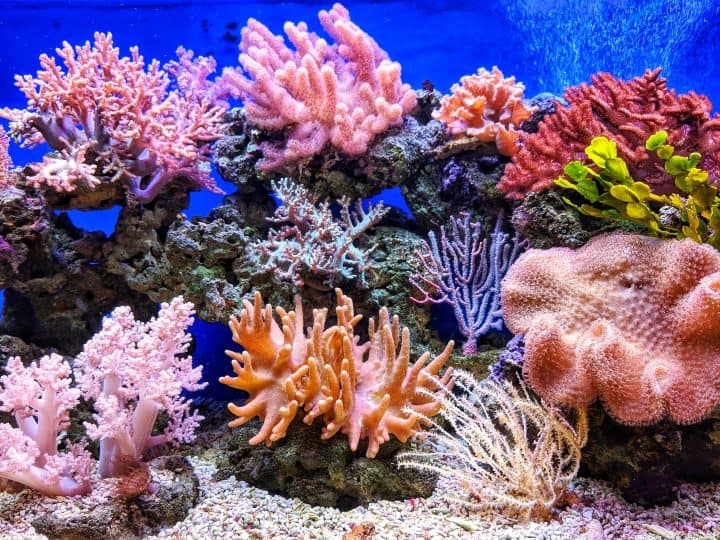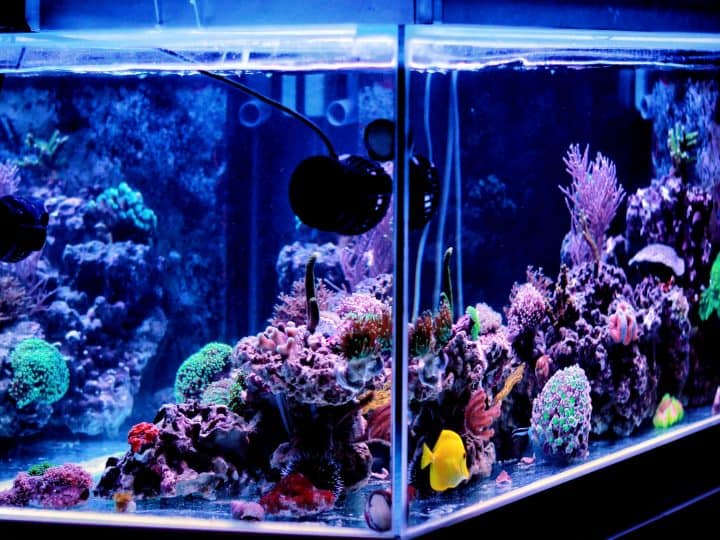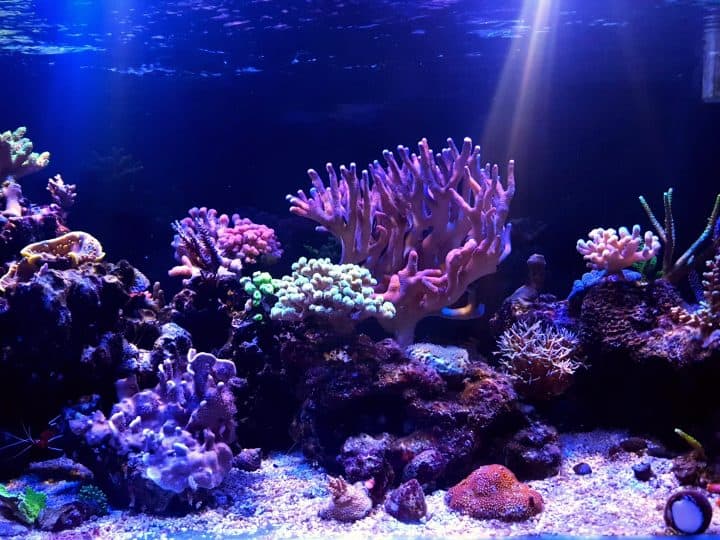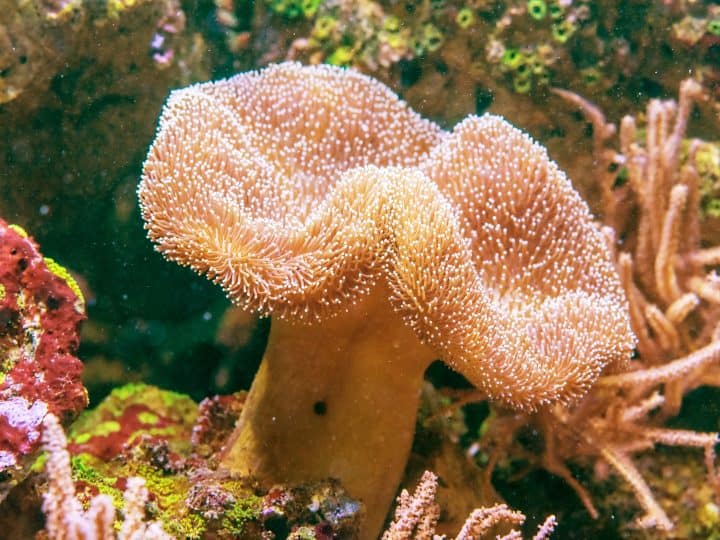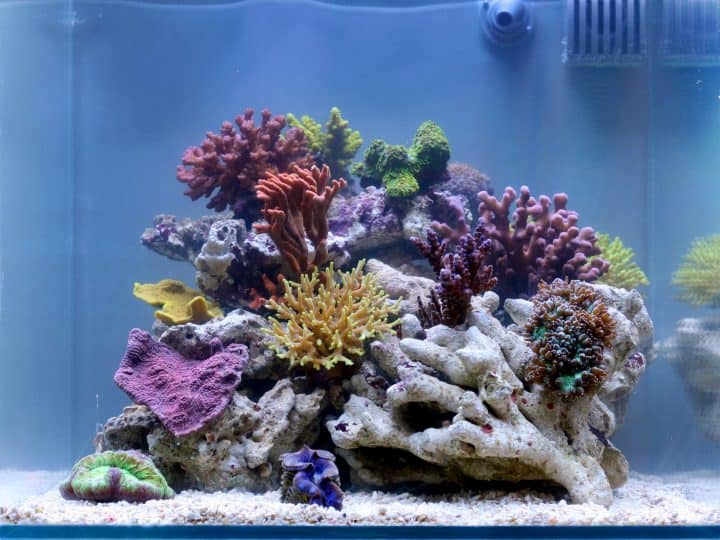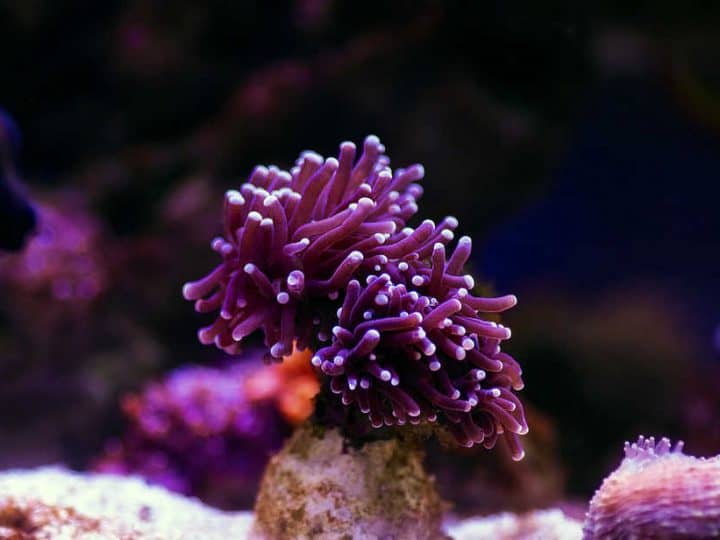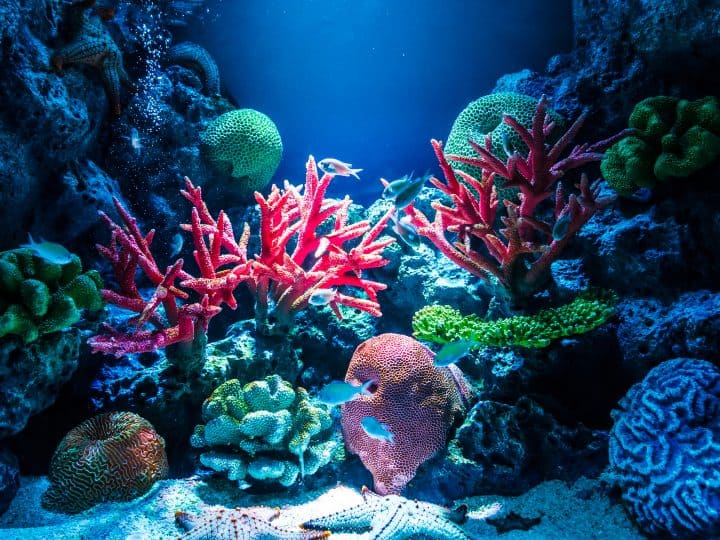Adding corals to a tank can be a big decision. There’s a lot to plan such as lighting, flow and filtration. A big part of growing corals is attaching the first frags onto your live rock. How does this work? I’ve done a lot of research and am ready to share the answer with you.
Use thick glue or epoxy putty to attach corals to live rock. First quarantine and dip the corals to prepare them for the tank. Cut off the base of the frag plug if necessary. Acclimate the corals to allow them to adjust to the new water parameters.
There’s more to putting corals on rocks than just this brief answer. In this post, I will be talking about all the ins and outs of how to put coral frags on live rocks in your reef tank. After reading this page I’m confident you’ll know all you need to fixate your first frag on a piece of rock yourself! Let’s get started.
What Is A Coral Frag?
If you are new to reef tanks, you may have heard about coral frags. Still, you might not know what they are and what they are used for. I’ll discuss that here!
Coral frags are short for coral fragments. These fragments are small pieces of coral that are sold in aquarium shops and pet stores.
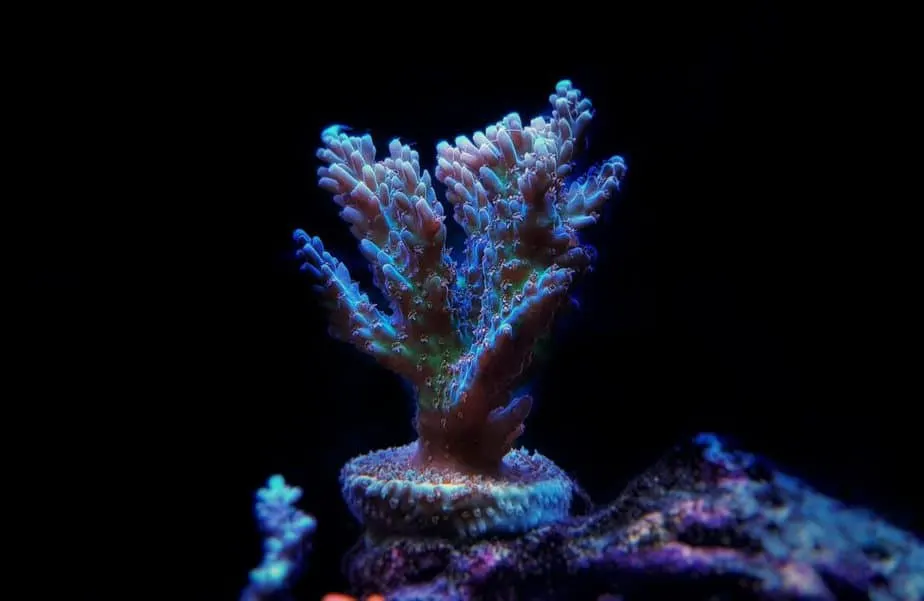
Coral frags are cut off from a much larger coral colony. They are fragmented and sold to reef tank owners for a low cost. And, they are highly convenient and easy to put into your tank.
These fragments will grow larger in your tank and will turn from fragments into larger corals which are no longer frags.
If you’re looking for more information on growing coral, check out my full guide that’ll tell you everything to get you started!
Why Do You Attach Coral Frags to Live Rock?
Coral fragments need a place to grow and nurture themselves. So, you can’t just put them on any old surface and expect them to propagate. In fact, in order to properly develop coral fragments, you need to place them on live rock or another steady surface/base.
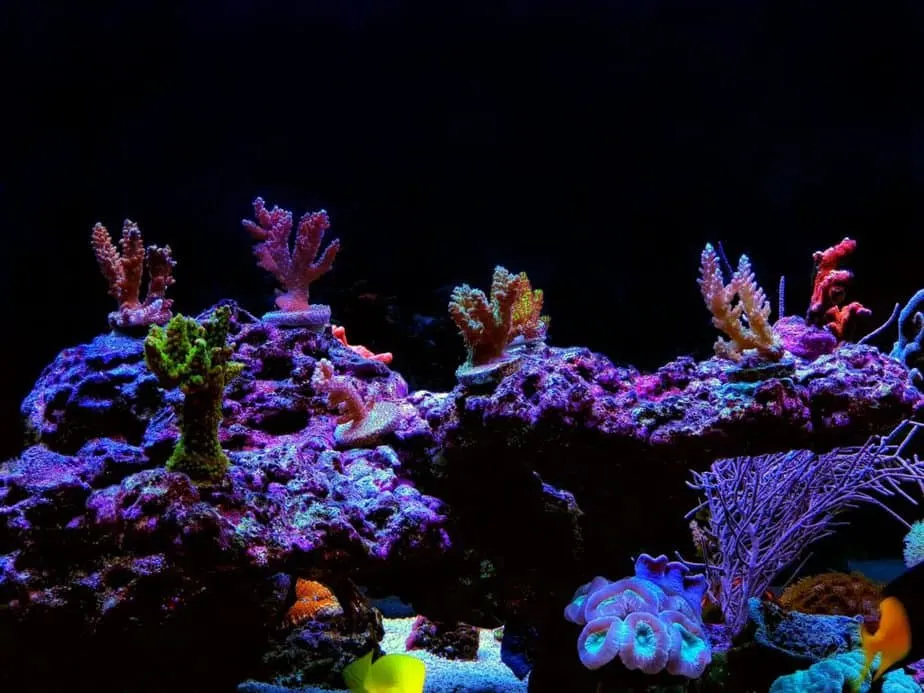
Live rock acts as a home and habitat for corals and other marine life. Your fish and other marine pets will be able to find shelter and security with a good live rock placed in your aquarium. More importantly, your coral will have a solid base to grow themselves on. Coral frags fit in perfectly on live rocks
Live rock also helps give nutrition to your coral as it also contains small fauna that your coral can feed off of. So, it is important to have your coral attached to live rock. I’ll talk about how you can properly attach your coral fragments in the next part of the post!
How Do Your Properly Attach Coral Frags on Live Rocks?
When you attach your coral fragments to live rock, you need to make sure that you have the right supplies for your tank. Attaching your frags is important to the future growth of your coral, so you don’t want to mess this up.
Luckily, I can show you exactly how to put your coral frags on live rocks. Just follow my instructions and you should have no issues with your coral frags!
Step 1: Prepare Your Coral Frag
Before you attach your coral fragment to live rock, you want to prepare your coral frag in a separate space. This is known as dipping your coral frag. Dipping a coral frag helps to prevent diseases and contamination in your reef tank.
You never know what is on your coral when you buy. So, it’s best to dip any coral you’re putting into your tank environment.
You do this first step by quarantining your coral frag in tank water. Then, you add a coral dip solution to the water to treat your coral and kill any potential pests or bacteria. Look at your coral carefully and see if there is anything on them. If they look healthy, you can take them out of the solution and rinse them.
Step 2: Get Your Live Rock and Prepare It For Your Coral
Once you know that you have a healthy coral frag, you can start the process of attaching your coral to the live rock. You should have already chosen your live rock and you want to clean your rock as well.
Don’t just put your coral down on the live rock right away. Make sure to scrub the area of rock you are using and rinse it off a little so it is ready for your coral. After this, you can begin getting your glue and other supplies to put your coral into your live rock.
Step 3: Pick A Location to Put Your Coral
Before you glue anything down, figure out where you will put your coral. If your coral needs a lot of light, place it in an area of the tank with a higher concentration of light. If your coral has lower light requirements, plant it in more shaded areas.
Also, think about how your coral will grow and what it might look like when it is fully matured. Certain corals will just look better in particular regions of your tank. So do a little bit of research on the growth patterns of your coral before placing them in your tank!
Step 4: Attach Your Coral Fragment to Your Live Rock
There are a few ways you can attach your coral fragment to your live rock. Glue is a popular method that many reef tank owners like to use. But, you can also use epoxy putty to fixate your coral frag. Cut off the plug on the bottom of your coral, then mold the clay into a shape that will fit on your rock.
Put the putty down onto the rock as quickly as you can. Then, place your coral into the putty. This is a relatively cheap and simple way to get your coral right in the area you want it to go!
Alternatively, if you want to, you can also use glue for the attachment process. However, I wouldn’t recommend using regular glue. Normal glues could come off in the water and won’t properly hold your coral down.
Instead, try using gel-like glues. Super gel glue, in particular, is good if you are gluing underwater. If you squeeze enough glue out in the water it will form into an almost solid shape. It will work like putty and you can mold the glue into the rock. Afterward, you can place your coral down into the live rock.
Just be aware that gel-like glues can take some time to set underwater. Sometimes, it can take up to a day for them to fully harden. If you are putting the glue on outside your tank, though, the process is a little different.
You can put the glue directly on the frag plug, then put it on your live rock. But, put a little bit of water on top of the glue. This will form a bubble and prevent smearing when your coral is placed on top of the rock outside your tank.
What Are The Benefits of Using Coral Frags?
1. Coral Frags Are Less Expensive
Buying fully grown coral can be very expensive. This depends on the type of coral you end up purchasing. However, by and large, you will end up spending less money on coral fragments. You can even get coral fragments for ten dollars. And, you get to watch your coral develop and grow into a fully grown organism!
2. Coral Frags Take Up Less Space
Another benefit of coral frags is their size. Coral fragments are small and can fit in with almost any reef tank, as a result. You can grow your coral exactly to the size you want and put them in your tank with little hassle. This is a major plus for reef tank owners who don’t want to buy a new tank to accommodate a larger coral!
3. Coral Frags Are Easy to Transport and Put in Your Tank
Because of the size of coral frags, it is obviously much more simple to transport your coral fragment. You won’t have to worry about bringing an entire coral colony into your home. Instead, you simply carry a small piece of coral and set it up in your tank.
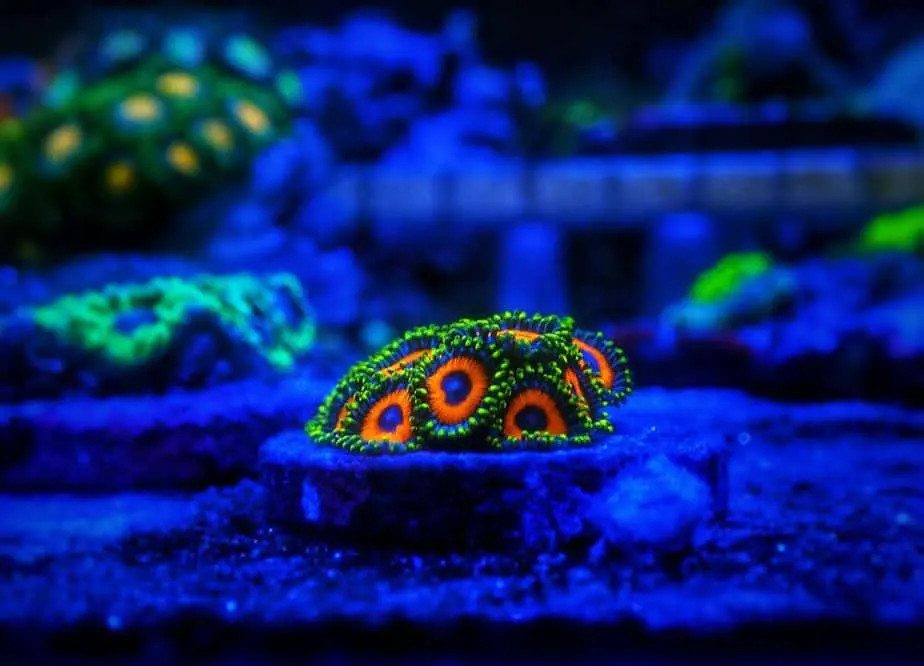
In addition, coral fragments are much easier to acclimate and put into your tank. You won’t have to figure out how to drop an entire large colony into your reef tank. Set up is a lot more simple, you just place your coral on a live rock securely.
Also, coral fragments won’t be as picky as an established colony of coral. Larger corals are used to a certain environment and tank set up. So, it can be hard to get tank conditions just right for a coral colony. With a smaller fragment of coral, this is less of an issue.
4. Easier to Clean and Dip Your Coral
Finally, coral fragments are much easier to clean and dip. With larger colonies, it can be harder to spot pests and contamination. There is much more surface area to inspect and clean. However, when you dip and clean your coral fragment, you won’t have to worry about this as much.
It’s easier to see if something is wrong with a smaller fragment, as well. And, it takes much less time to prepare your coral for your tank!
Overall, coral frags and colonies both have their pros and cons. With the help of this article, though, you should have a good idea of how to prepare your coral frag on a live rock!

